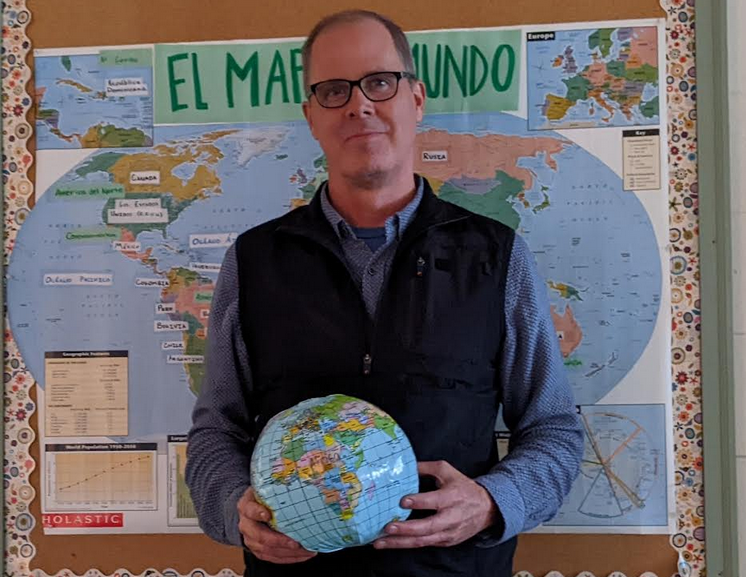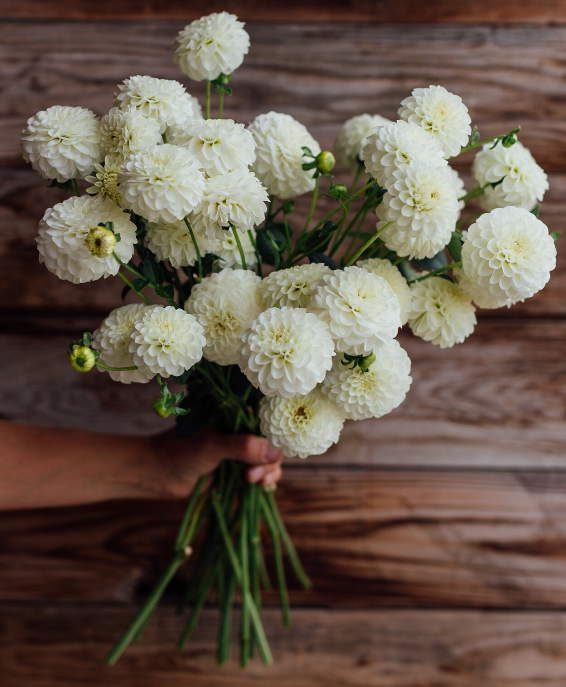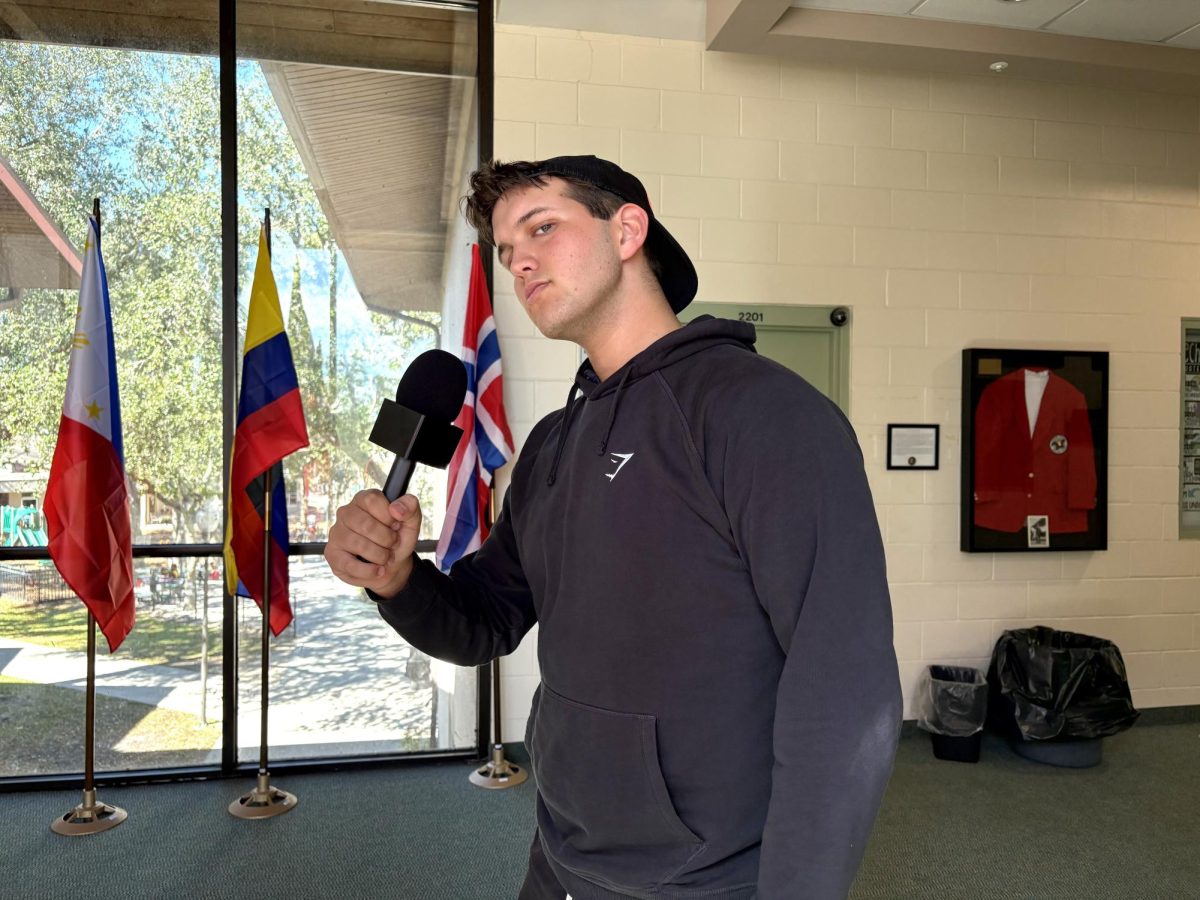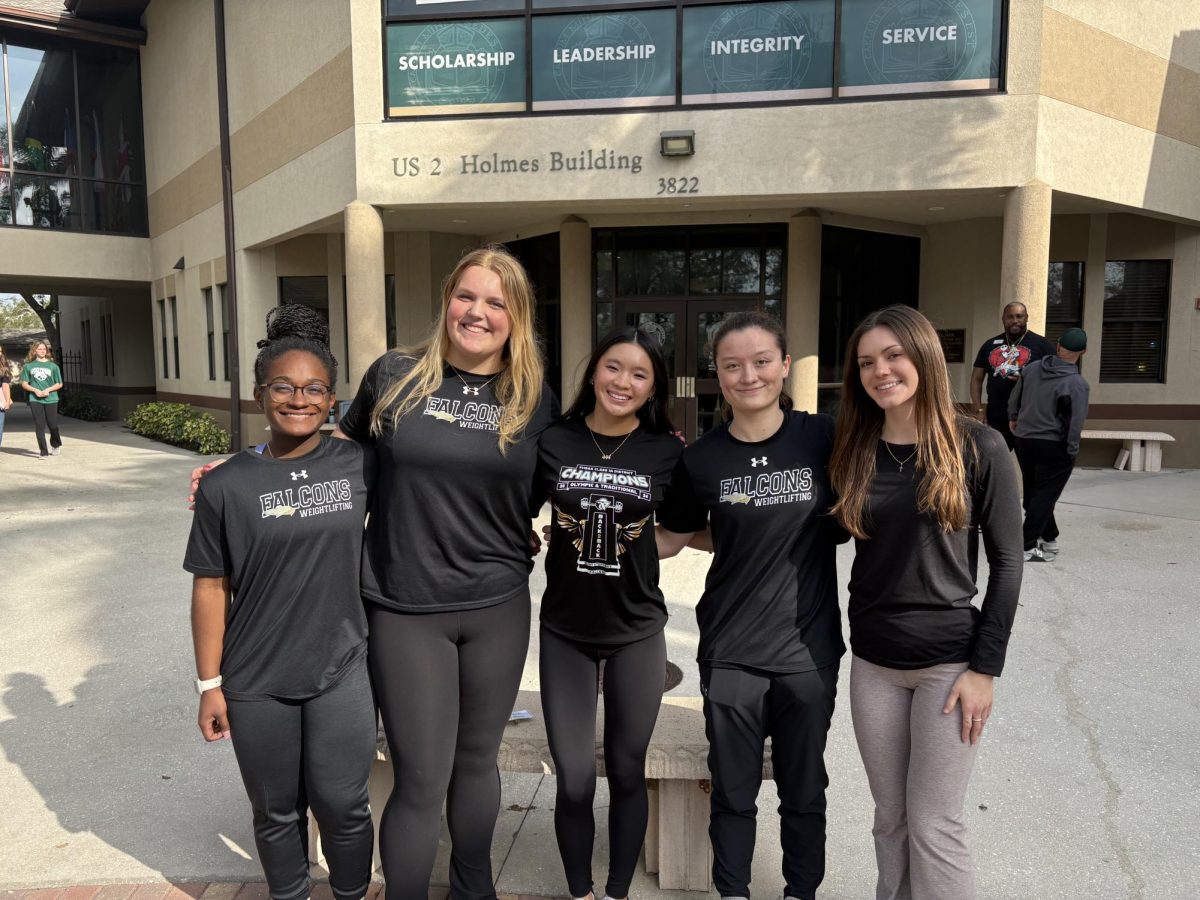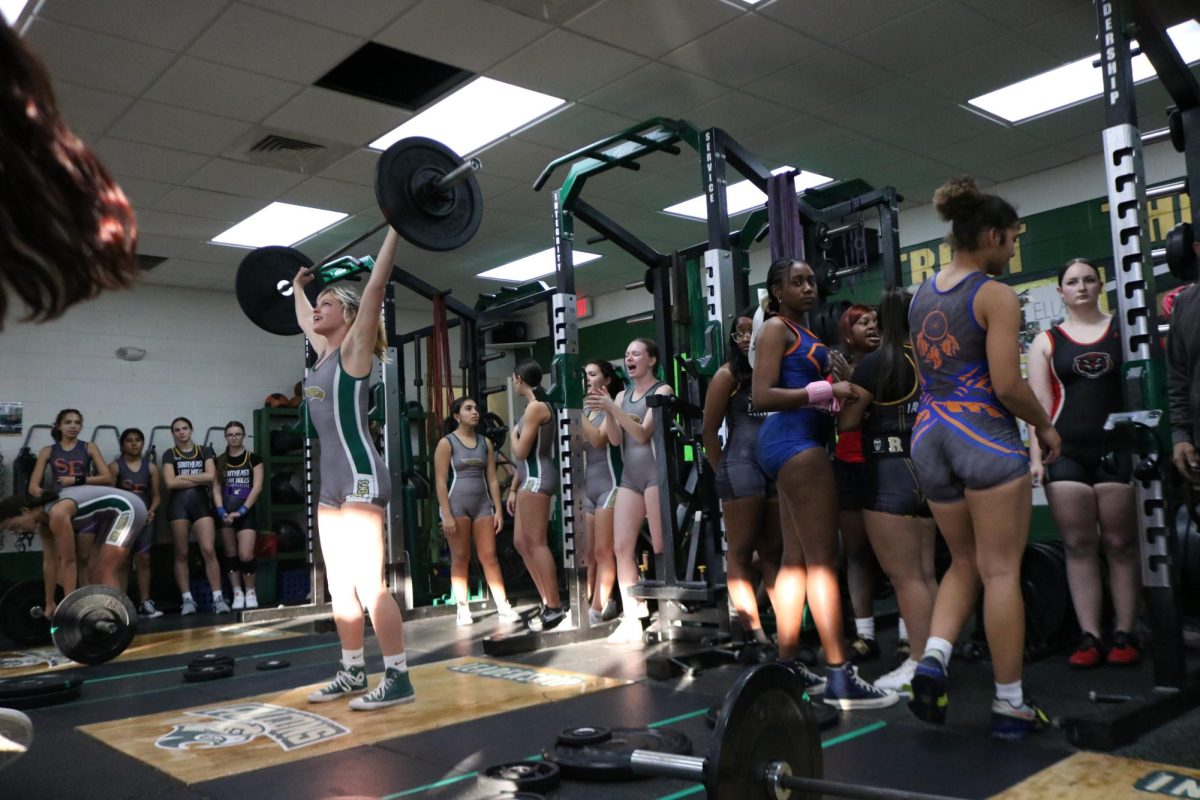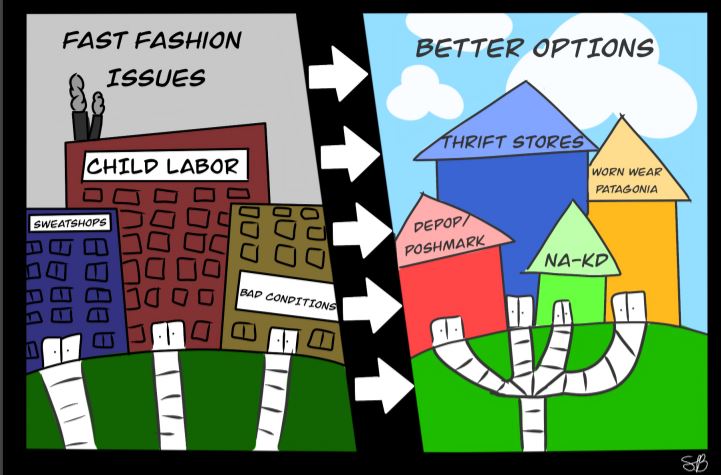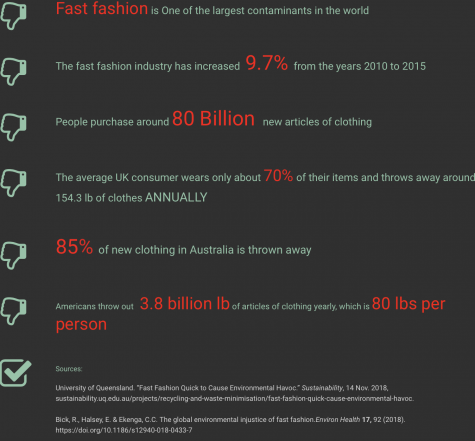Start shopping sustainably
You shop organic at Whole Foods. You’re into electric cars and recycling. But are your shopping practices sustainable?
Fast fashion can and should be replaced by more sustainable shopping. Art by Sarabeth Wester
Sustainability is a crucial move in today’s society for a milieu of reasons. In the food industry, consumers have flocked to Whole Foods and the like. In the auto industry, people are going electric all over the place. But have you ever considered shopping in sustainable, ethically conscious stores instead of fast-fashion hotspots like Nike, Zara, or H&M?
Shopping at stores like Nike, Zara, H&M, Forever 21, and even Urban Outfitters increases our annual amount of waste, takes advantage of people in countries with unfair laws, and contributes to pollution due to the extremely fast creation of clothing. It creates 20% of the planet’s water waste and 10% of carbon emission. Think about this: companies use about 10,000 liters of water (2,600 gallons) to make one pair of jeans.
Fast fashion hotspots such as China, India, and Bangladesh often use sweatshops or work environments that are plain awful. These locations feature unfair and forced labor, and at times, even child labor. People who work in these factories can work around 15 hours a day, averaging to about 96 hours per week, seven days a week. On top of the abysmal working hours, factories don’t provide air conditioning, employees breathe highly toxic substances while also enduring physical and verbal abuse. Around the entire world, 168 million kids are forced to work in factories with these dangerous working conditions.
In fast fashion factories, quantity and profits trump quality and standards; all of these brands prioritize the current trends, so they produce new clothing in an exceptionally short amount of time for a low price before the trend is over.
“I think fast fashion is unreliable and I think it should be eliminated completely,” said senior Kevin Jiang. “To make products cheaper, these companies take advantage of the lack of labor laws in countries such as Malaysia, China, and the Philippines. I think one should buy from brands with a clean human rights record.”
So the real question is, what should we do about fast fashion in our everyday lives?
One way to approach it is minimizing purchases at stores like Nike, H&M, Zara, and Urban Outfitters. Continual support of these companies will lead to continual pollution and waste.
Sure, sustainable products are expensive, which is why people turn to cheap clothing that only last months. However, although sustainable options are more costly, in the long run, if you go for a more eco-friendly store, then those products will last longer than the ones bought at cheap, unsustainable stores. This means that purchasing fewer products at a higher price will actually save you money because you won’t be throwing away pieces and re-purchasing new ones.
I hear you, but where should I purchase my clothing?
Great question! And I have an answer for you. Below, I’ve listed and linked seven stores for you to make your next sustainable purchase.
ASOS Green Room
ASOS created a “Green Room” line, which is something similar to H&M Conscious. The pieces are reasonably priced, starting at $10.
NA-KD
Based in Sweden, they’re quite transparent with their customers meaning that they provide which materials they use, who they’re partnered with, as well as a “what can you do” section. Their price range is around $20 and up and they have similar clothing to Urban Outfitters or PacSun.
House of Sunny
This brand focuses on pre-releases, which means that they create a specific amount of ordered products so that they don’t over-produce. Also, their packaging is 100% compostable, meaning that you wouldn’t recycle because you’d compost it and it’ll decompose in 6th months.
Worn Wear Patagonia
Patagonia is already known for being a sustainable store, however, Worn Wear Patagonia offers clothing half of what it used to be since it’s second-hand.
Djerf Avenue
This is an amazing brand founded in Sweden by Matilda Djerf. Their focus is on providing the best quality and customer service. It’s a small brand that launched in the latter half of 2019. They create collections, but once they sell out, then those pieces don’t come back; this is an approach that works because they don’t over-produce and then they don’t have to deal with waste. Their factory is also set up in Portugal since Portugal notably follows the European laws in terms of labor, animal, and environmental ethics.
Depop/Poshmark
Depop and Poshmark are definitely well-known stores when it comes to thrifting and second-hand clothing. These are great for finding truly unique pieces that you normally wouldn’t find anywhere else.
Thrift stores! (Goodwill, Plato’s Closet)
Ah yes. Good old-fashioned Goodwill. Truly a wonderful store for anything. Clothing? They got it. Books? They got it. Picture frames? You guessed it… they got it. And for low prices, too.
Plato’s closet is another great place where you can find accessories, clothes, and bags for around $10.
So, where will you buy your clothes next?

Sarabeth Wester is a senior on The Gauntlet with four years under her belt of hard work in the newsroom as our Creative Director. Her favorite color is...










